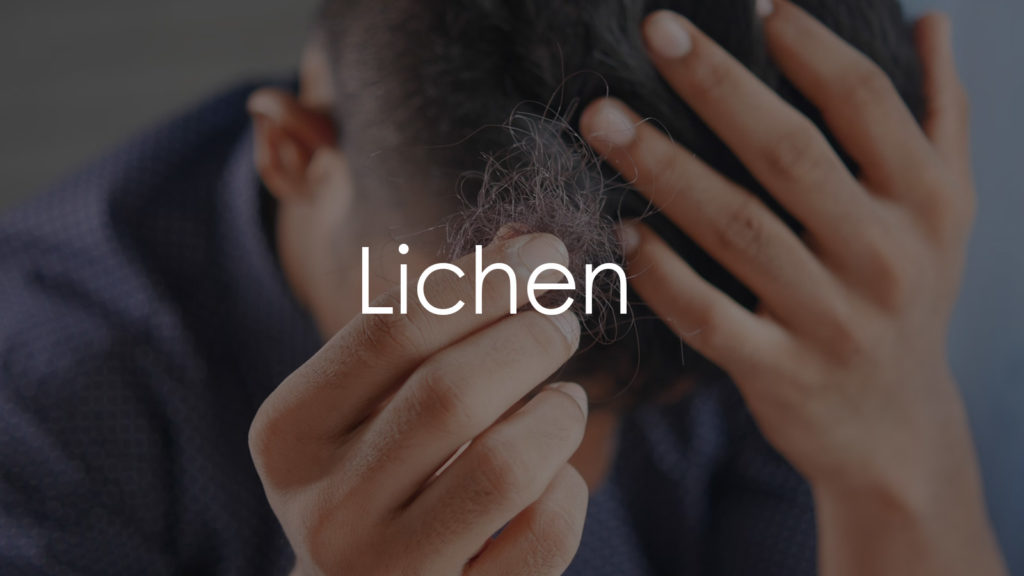Lichen planus presents with a variety of symptoms that can affect multiple areas of the body. These symptoms often cause significant discomfort and can impact the quality of life. Recognizing the signs and symptoms early can lead to more effective management and treatment.

Skin Symptoms
The most common manifestation of lichen planus is on the skin. Skin symptoms can vary in appearance and severity.
Papules and Plaques
The hallmark of lichen planus on the skin includes distinctive papules and plaques.
- Papules: Small, flat-topped, polygonal bumps that are purple or reddish in color.
- Plaques: Larger, raised areas formed by clusters of papules.
Itching
Intense itching is a prominent symptom of lichen planus on the skin.
- Severe Pruritus: Itching can be severe and persistent, often leading to scratching and potential secondary infections.
- Impact on Sleep: Itching can disrupt sleep and daily activities, significantly affecting quality of life.
Wickham’s Striae
A characteristic feature of lichen planus lesions.
- Appearance: White, lacy lines visible on the surface of papules and plaques, especially under magnification.
Blisters and Ulcers
In some cases, lichen planus can cause blisters and ulcers on the skin.
- Blisters: Fluid-filled blisters that may burst and form crusts.
- Ulcers: Painful, open sores that can develop from severe or prolonged lesions.
Oral Symptoms
Lichen planus can affect the mucous membranes of the mouth, leading to oral lichen planus.
White Patches
One of the most common signs of oral lichen planus.
- Reticular Pattern: Interlacing white lines or patches on the inside of the cheeks, gums, tongue, or lips.
- Painless: Often painless, but can cause discomfort for some individuals.
Erosive Lesions
More severe cases of oral lichen planus can lead to erosive lesions.
- Red, Swollen Areas: Painful red areas that may bleed or ulcerate.
- Difficulty Eating and Drinking: Erosive lesions can make eating and drinking uncomfortable or painful.
Burning Sensation
A burning or stinging sensation in the mouth.
- Mouth Pain: Pain can be exacerbated by spicy or acidic foods.
- Chronic Discomfort: Persistent burning sensation affecting daily oral hygiene and comfort.
Nail Symptoms
Lichen planus can also affect the nails, leading to various nail abnormalities.
Nail Thinning and Splitting
Common nail symptoms include thinning and splitting.
- Thinning: Nails become thin and brittle.
- Splitting: Horizontal or vertical splits in the nails.
Ridging and Grooving
Distinct ridges and grooves can appear on the nails.
- Longitudinal Ridges: Vertical lines running from the base to the tip of the nail.
- Nail Grooves: Depressions or grooves on the nail surface.
Nail Loss
Severe cases can lead to nail loss.
- Onycholysis: Separation of the nail from the nail bed.
- Nail Shedding: Complete loss of the nail, often painful and leading to secondary infections.
Scalp and Hair Symptoms
Lichen planus can affect the scalp, leading to hair and scalp symptoms.
Scalp Lesions
Lesions on the scalp similar to those on the skin.
- Papules and Plaques: Itchy, scaly patches on the scalp.
- Scarring: In severe cases, lesions can cause scarring of the scalp.
Hair Loss
Hair loss, known as lichen planopilaris, can occur.
- Patchy Hair Loss: Areas of the scalp where hair falls out in patches.
- Permanent Hair Loss: Scarring can lead to permanent hair loss in affected areas.
Genital Symptoms
Lichen planus can affect the genital area, leading to symptoms that cause significant discomfort.
Genital Lesions
Lesions similar to those found on the skin.
- Papules and Plaques: Purple or reddish bumps on the genital area.
- Erosive Lesions: Painful erosive lesions that can affect sexual activity and comfort.
Itching and Burning
Intense itching and burning sensations in the genital area.
- Discomfort: Itching and burning can cause significant discomfort and affect daily activities.
- Impact on Intimacy: Symptoms can affect sexual health and intimacy.
Psychological Impact
The symptoms of lichen planus can have a significant psychological impact.
Emotional Distress
The chronic nature and visible symptoms of lichen planus can lead to emotional distress.
- Anxiety and Depression: Increased risk of anxiety and depression due to the visible and uncomfortable nature of the condition.
- Social Withdrawal: Embarrassment or self-consciousness about visible lesions can lead to social withdrawal.
Quality of Life
Overall quality of life can be significantly affected.
- Physical Discomfort: Chronic itching, pain, and discomfort can affect daily life.
- Psychological Burden: The psychological impact can further reduce the quality of life and overall well-being.
Recognizing Early Symptoms
Early recognition of lichen planus symptoms is crucial for timely diagnosis and management.
Initial Signs
Identifying initial signs can lead to early intervention.
- Skin Lesions: Early appearance of papules and plaques on the skin.
- Oral Changes: White patches or erosive lesions in the mouth.
Seeking Medical Advice
Consulting a healthcare provider when symptoms appear.
- Early Diagnosis: Early diagnosis can help manage symptoms and prevent complications.
- Treatment Options: Access to treatment options that can reduce symptoms and improve quality of life.
Conclusion
The symptoms of lichen planus are varied and can affect multiple areas of the body, including the skin, mouth, nails, scalp, and genitals. Recognizing these symptoms early and understanding their impact is crucial for effective management and treatment. By staying informed and seeking medical advice when symptoms appear, individuals with lichen planus can manage their condition more effectively and improve their quality of life.